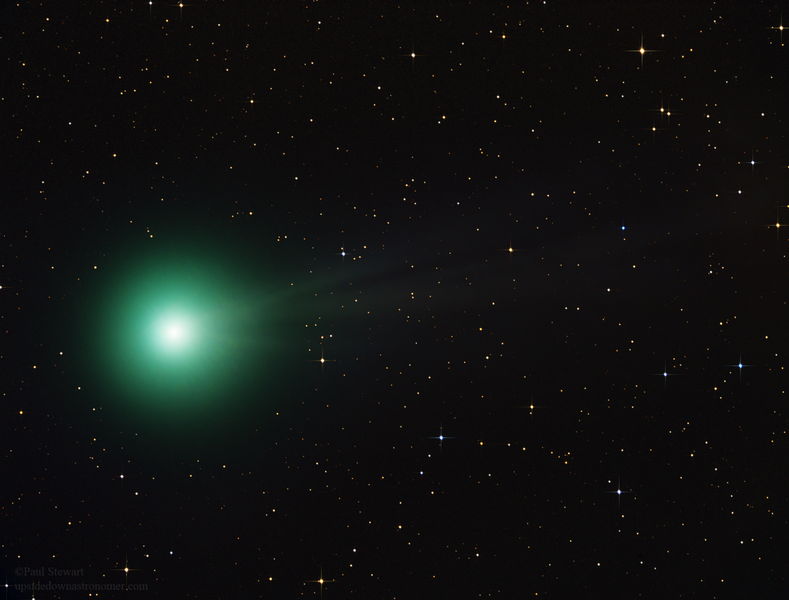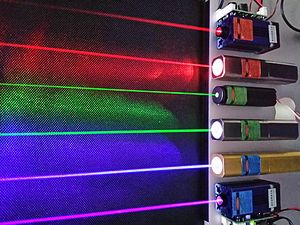 Pocket watch, savonette-type. (Image Source: Wikipedia.org ; Photograph by Isabelle Grosjean)
Pocket watch, savonette-type. (Image Source: Wikipedia.org ; Photograph by Isabelle Grosjean)
By Glenn A. Walsh
Reporting for SpaceWatchtower
In June, our clocks will slow down by a
second, to match the slowing of the rotation rate of the Earth. At
7:59:59 p.m. Eastern Daylight Saving Time (EDT) / 23:59:59 Coordinated
Universal Time (UTC) on Tuesday Evening, 2015 June 30, an additional
second will be added to the civil time scale just before the month of July
officially begins according to Coordinated Universal Time, the international
time scale used by many scientists.
Known as a “Leap Second,” one
second is added to the time scale, periodically, either at the very
end of June or the very end of December. Since the first Leap Second
was added in 1972, 25 Leap Seconds have been added, the last one in
June of 2012.
Leap Seconds have been added,
periodically, to respond to the continual slowing of the rotation
rate of the Earth. Tidal forces from the Moon (and to a lesser
extent, the Sun), in addition to the well-known ocean tides, also
work to slow the Earth's rotation rate. Geologic conditions that
change the distribution of the Earth's mass, such as the movement of
the Earth's crust relative to its core, are a contributing factor to
slowing of the rotation rate.
In theory, a negative Leap Second,
retracting one second at the end of June or December, is also
possible. This would occur if the Earth's rotation rate started
accelerating. However, there has never been a need for a negative
Leap Second.
The slowing of the Earth's rotation
rate is not consistent, and hence, Leap Seconds are irregularly
spaced and unpredictable. No Leap Seconds were added between the Leap Second of 1998 December 31 and the Leap Second of 2005 December 31, while Leap Seconds were added each year from 1972 to 1979 (including two Leap Seconds in 1972). The International Earth Rotation and
Reference Systems Service (IERS), based in Frankfurt, Germany,
usually decides to install a Leap Second in the time scale about six
months in advance of implementation.
Of course, the Earth's rotation rate
does not suddenly slow down by one second, at certain intervals. The
Earth's rotation rate has been continually slowing down, and this
continues to be monitored by scientists.
Currently, the Earth's rotation rate,
measured as UT1 (Mean Solar Time at the Prime Meridian in Greenwich, England), is behind scientists' more consistent UTC (derived from International Atomic Time, determined
by atomic clocks) by five-tenths of a second. So, for the civil time
scale to stay more consistent with the Earth's rotation rate, a Leap
Second is needed to slow down UTC by one second.
If the Leap Second occurred today (2015 January 27), this
would make the Earth's rotation rate in advance of UTC by five-tenths of
a second. Then, it may take two or three more years for the Earth to
slow down enough, to the point where UT1 would again be behind UTC
and another Leap Second would be needed.
Of course, by June 30, UT1 may (or may
not) actually be six or seven-tenths of a second behind UTC. UTC is never allowed to advance more than nine-tenths of a second ahead of UT1, although usually a Leap Second is added long before that could happen.
[UPDATE: As of 2015 June 29, the Earth's rotation rate / UT1 was seven-tenths
of a second behind UTC. So, following the addition of the Leap Second,
the Earth's rotation rate / UT1 will be seven-tenths of a second in advance of
UTC.]
Leap Seconds have proven to be a problem
for computers. Hence, in 2005 there was a proposal to eliminate Leap
Seconds, possibly replacing them with Leap Hours as a way to keep the
civil time scale in sync with the Earth's rotation rate. However,
this issue has been quite controversial among scientists and
government officials, so the decision to make any change has been
delayed.
More on Leap Seconds: Link >>>
http://en.wikipedia.org/wiki/Leap_second
Recent articles on the debate regarding abolishing the leap second ---
McMillan, Robert. "The Leap Second is About to Rattle the Internet. But There's a Plot to Kill It."
Wired Magazine 2015 Jan. 8.
Link >>>
http://www.wired.com/2015/01/leap-second-rattle-internet-theres-plot-kill/
McGinty, Jo Craven. "Time to Change Global Clock Management? It's Under Debate.
The Wall Street Journal 2015 Jan.16.
Link >>>
http://www.wsj.com/articles/planned-june-leap-second-stirs-a-timely-debate-1421430888
More on Universal Time (including UT1 & UTC):
Link >>>
http://en.wikipedia.org/wiki/Universal_Time
More on Coordinated Universal Time:
Link >>>
http://en.wikipedia.org/wiki/Coordinated_Universal_Time
More on International Atomic Time:
Link >>>
http://en.wikipedia.org/wiki/International_Atomic_Time
More on precise, international radio time services ---
WWV (SW), Fort Collins, Colorado (Voice announcements of precise time):
Link >>>
https://en.wikipedia.org/wiki/WWV_%28radio_station%29
WWVH (SW), Kekaha, Kauai, Hawaii (Voice announcements of precise time):
Link >>>
https://en.wikipedia.org/wiki/WWVH
CHU (SW), Ottawa, Ontario, Canada (Voice announcements of precise time):
Link >>>
https://en.wikipedia.org/wiki/CHU_%28radio_station%29
WWVB (LW), Fort Collins, Colorado (For Radio-Controlled Clocks only):
Link >>>
https://en.wikipedia.org/wiki/WWVB
Related Blog Posts ---
New Laser System Could Provide Mini Atomic Clocks (2014 Nov. 15):
New U.S. Atomic Clock World's Most Accurate (2014 April 26):
Even More Accurate Atomic Clock (2014 Jan. 27):
Laser Pulses Create More Accurate Atomic Clocks (2013 June 21):
Second Added to All Clocks Saturday Evening by Scientists (2012 June 29):
End of the "Leap Second"? (2012 Jan. 17):
Source: Glenn A. Walsh Reporting for SpaceWatchtower, a project of Friends of the Zeiss.
Want to receive
SpaceWatchtower blog posts in your inbox ?
Send request to <
spacewatchtower@planetarium.cc
>..
gaw
Glenn A. Walsh, Project Director,
Friends of the Zeiss <
http://buhlplanetarium.tripod.com/fotz/
>
Electronic Mail - <
gawalsh@planetarium.cc
>
SpaceWatchtower Blog: <
http://spacewatchtower.blogspot.com/
>
Also see: South Hills Backyard Astronomers Blog: <
http://shbastronomers.blogspot.com/ >
Barnestormin: Writing, Essays, Pgh. News, & More: <
http://www.barnestormin.blogspot.com/ >
About the SpaceWatchtower Editor / Author: <
http://buhlplanetarium2.tripod.com/weblog/spacewatchtower/gaw/ >
SPACE & SCIENCE NEWS, ASTRONOMICAL CALENDAR:
<
http://buhlplanetarium.tripod.com/#news
>
Twitter: <
https://twitter.com/spacewatchtower
>
Facebook: <
http://www.facebook.com/pages/SpaceWatchtower/238017839577841?sk=wall
>
Author of History Web Sites on the Internet --
* Buhl Planetarium,
Pittsburgh:
<
http://www.planetarium.cc >
*
Adler Planetarium, Chicago:
<
http://adlerplanetarium.tripod.com
>
* Astronomer, Educator, Optician John A. Brashear:
<
http://johnbrashear.tripod.com >
*
Andrew Carnegie & Carnegie Libraries:
<
http://www.andrewcarnegie.cc >
* Civil War Museum of Andrew Carnegie Free Library:
<
http://garespypost.tripod.com >
*
Duquesne Incline
cable-car railway, Pittsburgh:
<
http://inclinedplane.tripod.com
>
* Public Transit:
<
http://andrewcarnegie2.tripod.com/transit
>








